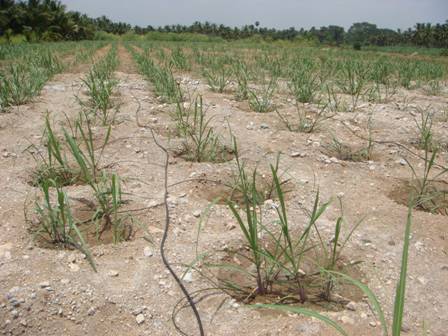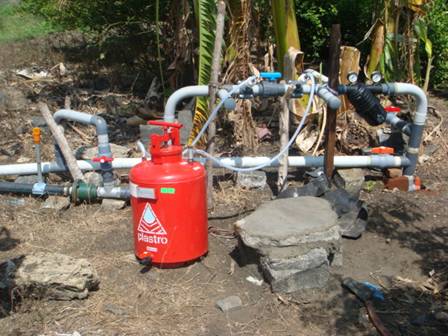
|
||||||||||||||||||||||||||||||||||||||||||||||||||||||||||||||||||||||||||||||||||||||||||||||||||||||||||||||||||||||||||||
| Home | Seasons & Varieties | Tillage | Nutrient Mgmnt | Irrigation Mgmnt | Weed Mgmnt | Crop Protection | Cost of Cultivation | Photobank | ||||||||||||||||||||||||||||||||||||||||||||||||||||||||||||||||||||||||||||||||||||||||||||||||||||||||||||||||||||||||||||
Nutrient Management :: Fertigation |
||||||||||||||||||||||||||||||||||||||||||||||||||||||||||||||||||||||||||||||||||||||||||||||||||||||||||||||||||||||||||||
Fertigation Fertigation is a method of fertilizer application in which fertilizer is incorporated within the irrigation water by the drip system. In this system fertilizer solution is distributed evenly in irrigation. The availability of nutrients is very high therefore the efficiency is more. In this method liquid fertilizer as well as water soluble fertilizers are used. By this method, fertilizer use efficiency is increased from 80 to 90 per cent.
Fertilizer efficiencies of various application methods
Advantages of fertigation
Water saving, yield and profit under drip and drip fertigation systems
Fertilizer used in fertigation
Fertilizers commonly used in fertigation
Specialty water soluble fertilizers
N fertigation Urea is well suited for injection in micro irrigation system. It is highly soluble and dissolves in non-ionic form, so that it does not react with other substances in the water. Also urea does not cause precipitation problems. Urea, ammonium nitrate, ammonium sulphate, calcium ammonium sulphate, calcium ammonium nitrate are used as nitrogenous fertilizers in drip fertigation. P fertigation Application of phosphorus to irrigation water may cause precipitation of phosphate salts. Phosphoric acid and mono ammonium phosphate appears to be more suitable for fertigation. K fertigation Application of K fertilizer does not cause any precipitation of salts. Potassium nitrate, Potassium chloride, Potassium sulphate and mono potassium phosphate are used in drip fertigation. Micro nutrients Fe, Mn, Zn, Cu, B, Mo could be used as micro nutrients in drip fertigation. Fertigation equipments Three main groups of equipments used in drip system are :
Ventury Construction in the main water flow pipe causes a pressure difference (Vaccum) which is sufficient to suck fertilizer solution from an open container into the water flow. It is very easy to handle and it is affordable even by small farmers. This equipment is most suitable for smaller area. Fertilizer tank A tank containing fertilizer solution is connected to the irrigation pipe at the supply point. Part of the irrigation water is diverted through the tank diluting the nutrient solution and returning to the main supply pipe. The concentration of fertilizer in the tank thus becomes gradually reduced. Fertilizer pump The fertilizer pump is a standard component of the control head. The fertilizer solution is held in non-pressurised tank and it can be injected into the irrigation water at any desired ratio. Therefore the fertilizer availability to each plants is maintained properly. Cost of fertigation equipments
Economics of drip irrigation system The initial investment in drip irrigation system is mainly depends upon the spacing of crops. The initial cost will be almost 20-25 thousand rupees per hectare for wider spacing crops such as coconut, mango, grapes and for orchard crops. The initial cost is approximately 50-70 thousand rupees per hectare for close spacing crops such as sugarcane, banana, papaya, mulberry, turmeric, tapioca, vegetables and flower crops.
|
||||||||||||||||||||||||||||||||||||||||||||||||||||||||||||||||||||||||||||||||||||||||||||||||||||||||||||||||||||||||||||
| Home | Seasons & Varieties | Tillage | Nutrient Management | Irrigation Management | Weed Management | Crop Protection | Cost of Cultivation | Disclaimer © All Rights Reserved. TNAU-2016. |
||||||||||||||||||||||||||||||||||||||||||||||||||||||||||||||||||||||||||||||||||||||||||||||||||||||||||||||||||||||||||||

